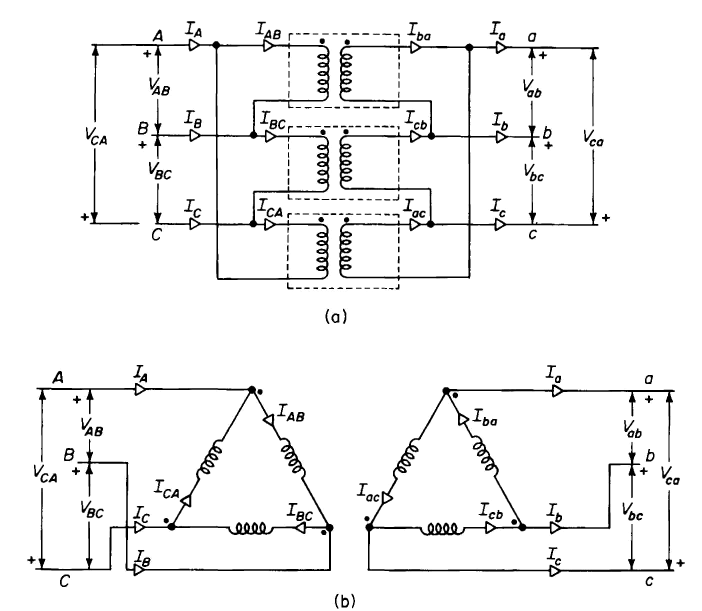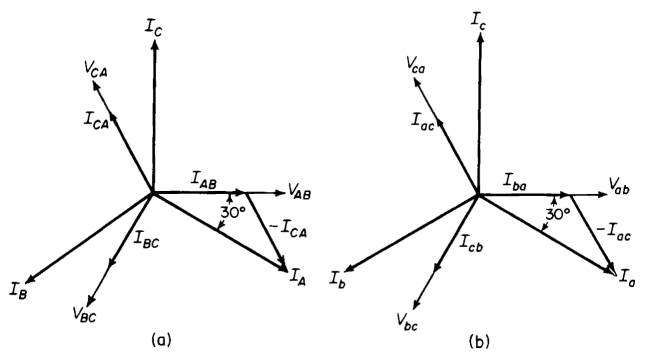| Capacitors, Magnetic Circuits, and Transformers is a free introductory textbook on the physics of capacitors, coils, and transformers. See the editorial for more information.... |

|

Home  The Transformer The Transformer  3-Phase Transformer Connections 3-Phase Transformer Connections  Delta-Delta Connection Delta-Delta Connection |
|||||||||||||||
| See also: Wye-Wye Connection, Wye-Delta Connection, Open-Delta or V-V Connection | |||||||||||||||






|
|||||||||||||||
Delta-Delta Connection
Figure 6-21 shows three single-phase transformers, assumed to be identical, with their primaries connected in delta and their secondaries connected in delta. A common physical arrangement of the three transformers is shown in Fig. 6-21 (a); a schematic diagram typical for 3-phase delta circuits is shown in Fig. 6-21(b).
The equivalent circuits of Figs. 6-11, 6-13, and 6-14 apply to each of the three transformers connected delta-delta with or without the ideal transformer. If the three transformers are identical and are operating under balanced 3-phase load and balanced 3-phase voltage conditions, each transformer carries one third of the 3-phase load. It is evident from Fig. 6-21 that full line-to-line voltage exists across the windings of each transformer. Therefore, the secondary line-to-line voltages Vab, Vbc and Vca are practically in phase with the corresponding primary line-to-line voltages VAB, VBC and VCA. In addition, if the leakage impedance drops are neglected, the voltage ratios equal the turns ratio, i.e.
Figure 6-22 shows phasor diagrams for a bank of ideal transformers connected delta-delta and supplying a balanced unity power-factor load.
In the case of identical transformers, when the third harmonics in the exciting current are neglected, the line currents are
and
from which
Similarly
and
If the exciting current is neglected, then we have
The delta-delta arrangement is restricted to applications in which neither the primary nor the secondary side requires a 3-phase neutral connection. It is generally used in moderate voltage systems because full line-to-line voltage exists across the windings, and in heavy current systems because the windings need to carry only 1/
|
|||||||||||||||
Home  The Transformer The Transformer  3-Phase Transformer Connections 3-Phase Transformer Connections  Delta-Delta Connection Delta-Delta Connection |
|||||||||||||||
Last Update: 2011-02-16





 times the currents flowing in the windings under balanced conditions. This can be seen by referring to Fig. 6-21 and the phasor diagram of Fig. 6-22(a) as follows
times the currents flowing in the windings under balanced conditions. This can be seen by referring to Fig. 6-21 and the phasor diagram of Fig. 6-22(a) as follows





